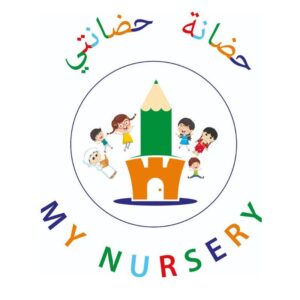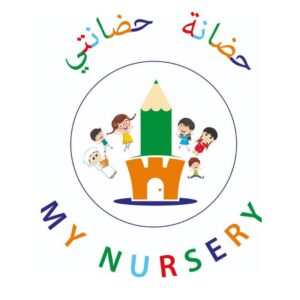A fire drill procedure can help ensure that your employees can get to safety quickly and effectively in case a fire, power outage or another disaster occurs during working hours. Whether it’s a chemical spill or a terrorist attack, employees need to know the evacuation routes of the building where they work. Conducting regular fire drills can ensure that they do.
The Nursery Manager has overall responsibility for the fire drill and evacuation procedures and senior staff assists in the implementations of such procedures. These are carried out and recorded for each group of children every month or as and when a large change occurs, e.g. a large intake of children or a new member of staff joins the nursery. These drills will occur at different times of the day and on different days to ensure evacuations are possible under different circumstances and all children and staff participate in the rehearsals.
Registration :An accurate record of all staff and children present in the building must be kept at all times and children/staff must be marked in and out on arrival and departure. An accurate record of visitors must be kept in the visitor’s book. These records must be taken out along with the register and emergency contacts list in the event of a fire.
No smoking policy :The nursery operates a strict no smoking policy, which acts as a preventative measure of the starting of a fire – please see this separate policy for details.
Fire drill procedure On discovering a fire:
- Calmly raise the alarm
- Immediately evacuate the building under guidance from the person in charge
- Using the nearest accessible exit, lead the children and visitors out and assemble at the rear of the car park or the rear of the garden area.
- Close all doors behind you wherever possible
- Adults and children present on the first floor should evacuate the building via the closest designated fire exit – caution must be exercised when escorting the children down the stairs.
- Babies or children that are not able to walk unaided should be evacuated from the building through the fire exit located near to the Clinic. If any practitioners are on lunch break during a fire drill the staff are to go immediately to the baby room to help with the children that are sleeping.
- Children or adults with mobility difficulties should be escorted from the building by the member of staff attending or caring for that individual/child. Additional support may be required, such as walking aids or another member of staff, depending on the person’s condition
- DO NOT stop to collect personal belongings on evacuating the building
- DO NOT attempt to go back in and fight the fire
- DO NOT attempt to go back in if any children or adults are not accounted for. If you are unable to evacuate safely:
- Stay where you are safe
- Keep the children calm and together
- Wherever possible alert the manager of your location and identity of the children and other adults with you.
The person in charge is to: - Pick up the children’s register, staff register, phone, keys, visitor book and fire bag (containing
emergency contacts list, nappies, wipes and blankets) - Telephone emergency services: dial 999 and ask for the fire service
- In the fire assembly point area – (address as above) – check the children against the register
- Account for all adults – staff and visitors
- Advise the fire services of anyone missing and possible locations and respond to any other questions
they may have.
All practitioners within the room must take with them - Base room register
- First Aid Box
- Any medication if needed
- Telephone
In the event of fire, our first priority is to evacuate all children, parents and visitors out of the building as
quickly as possible. Below are the procedures we will calmly adopt should the need arise.
Emergency Evacuation & Fire safety Procedures
Fire Risk Assessment
The Fire Precautions (Workplace) Regulations 1999 calls for all premises to carry out formal Risk
Assessments with regard to fire safety in the workplace. A fire safety risk assessment (which is included in
the overall daily risk assessment will be carried out every morning before the nursery opens by a senior member of staff).
Means of Escape
The main exit routes are shown on a map which is located on the notice board just inside the front door. Generally they are via the fire exits located on either side of the building.
Ground Floor:
- The Babies will use the fire exit door located near to clinic, All areas outside the Baby
Room should exit via the main entrance. - The Toddlers will use the fire exit located near to clinic. All areas outside the Toddler room
should exit via the main entrance.
First Floor:
- Children and adults situated in the Pre-school Rooms, and the children’s toilets should be evacuated
using the fire exit door by using the staircase and main door of the nursery. - If the fire exit is unclear and not accessible then all adults and children to stand by the window and await fire rescue service.
Assembly Point
Route A – Children, staff and visitors should leave the building through the fire exit doors, walk to main door and stand at the end of car park.
If an evacuation takes place during outdoors play, the manager (or next in charge) will contact the members
of staff who are supervising outdoor play and ask them to use the outdoor play route
Route B – to the assembly point. This route consists of:
On exiting the outdoor play area to the back area of the nursery parking.
Fire Warning System:
As soon as anyone discovers a fire, or is aware of any threat, e.g. suspicious package, terrorist attack warning etc., the fire alarm should be activated by breaking the glass on one of the fire alarm points which are located adjacent to the main points of exit. The audible alarm must be acted upon immediately by all staff. The premises are fitted with a fire alarm system which will activate in all rooms if set off. Fire drills will be carried out every month. The Health & Safety Designated Officer, who is responsible for overall fire safety will formally record the results of fire drills. In his / her absence the next person in charge will do this.
Smoke alarms are fitted throughout the premises and the Health & Safety Designated Officer will test the smoke alarms weekly, recording the results.
Fire Fighting Equipment
Fire extinguishers are installed at key locations around the building and are maintained in efficient operating condition. An attempt should only be made to tackle a fire after the building has been evacuated and only if it is safe to do so. No member of staff should place himself or herself in any danger. Operating instructions are printed on each extinguisher and should be read carefully before use.
Responsibilities
Each room supervisor will have a primary responsibility for ensuring that all children, from within the room they are working at the time, are evacuated at the time the alarm is raised.
A “999” call will be made by the HSDO, or in her absence the next officer in charge. S/he will also be responsible for checking both the children’s and adults’ toilets to ensure that no-one is left behind.
The Nursery manager or next person in charge will be responsible for picking up the signing in books and register from reception and will assist in evacuating the babies from the ground floor if possible. On their way from the office they will check the staff room and toilets.
Room Supervisors will take a “head count” once all the children from their rooms reach the assembly point and check that their register accounts for all the children, when the manager calls them out from the main register. The manager will be responsible for ensuring that all staff and visitors are accounted for. Any missing persons must be reported immediately to the manager. All personnel must ensure that their workplace is maintained in a clean and tidy condition, free of combustible waste materials. All waste bins are to be emptied at the end of each working day.
Fire Safety Training
All personnel will receive relevant fire safety instructions during the induction period, including:
- Fire risk areas
- Fire avoidance measures
- Fire detection, alarm & evacuation drills
- Operating fire fighting equipment
This policy was adopted on September 2018.
Signed on behalf of the nursery: Aisha Abdul Rahman( Director)
Date for review:
August 2022

